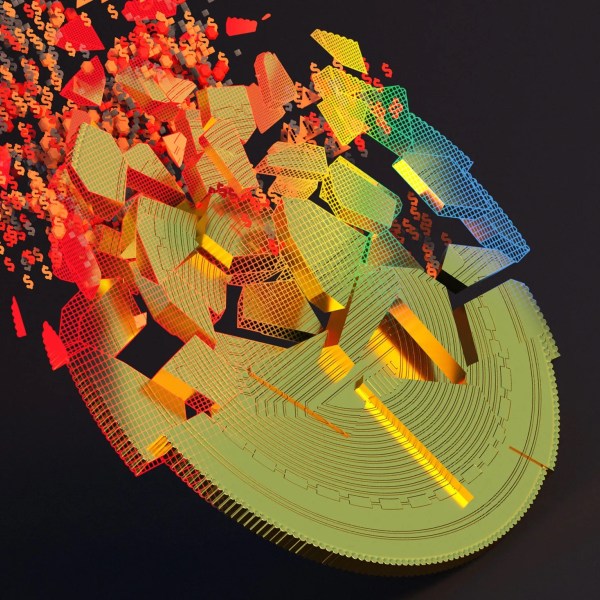When Bitcoin Splits into Sects: Developers Wage a Holy War Over “What Should Go Into a Block”
The Bitcoin community is facing internal division over the purpose of the blockchain, with the core controversy centered on whether to modify the code to accommodate more non-financial transaction data. The Core camp supports relaxing restrictions to expand use cases and increase miner revenue, while the Knots camp opposes this and has launched its own client software. Summary generated by Mars AI. This summary is generated by the Mars AI model, and the accuracy and completeness of its content are still in the process of iterative updates.
Bitcoin is facing a new civil war over the use of its blockchain
I recently had the pleasure of visiting the charming Swiss mountain town of Lugano. Its appeal lies in the fact—as Tether CEO Paolo Ardoino put it—that the city is “essentially Italian, but managed by the Swiss.” Ardoino is one of the main backers of the “Plan B” Bitcoin conference, where I moderated a discussion about the growing trend of governments around the world embracing this original cryptocurrency.
The atmosphere at the conference was upbeat—which is no surprise, since everyone present worships Bitcoin—but it was also clear that trouble lurks in paradise. It turns out that Bitcoin’s codebase is experiencing an increasingly deep division: the controversy centers on whether the code should be modified to allow the blockchain to accommodate more data unrelated to financial transactions.
The idea of including non-Bitcoin transaction-related data in blocks is not new. In fact, the very first block on the blockchain included a newspaper headline about a bank bailout. However, today, Bitcoin’s largest and most influential group of developers—known as “Core”—plans to adjust their software to significantly relax the restrictions on the amount of non-payment information that can be included in each block.
For the Core camp, this is a simple and pragmatic move that can both promote new uses for Bitcoin and create additional fee income for miners at a time when the block reward is only 3.125 bitcoins and is expected to halve again in 2028. However, a rapidly rising rival faction completely rejects this plan and has launched their own Bitcoin client software—Knots.
This faction’s software is led by an influential Bitcoin developer who is a devout Catholic and reportedly named it “Knots” after the story of Jesus driving out the money changers from the temple with a “whip of cords.” According to a lawyer from the Knots camp whom I interviewed, the necessity of this software lies in protecting the blockchain from what he condemns as spam senders and those promoting “borderline scam” projects such as Bitcoin NFTs.
If you have ever interacted with Bitcoin supporters online or offline, you know they are not known for their diplomacy. This is especially true of early prominent figures in Bitcoin—they attacked each other both on the stage in Lugano and on X (formerly Twitter). These high-profile camp representatives include: Peter Todd and Jameson Lopp from the Core camp, and Nick Szabo and Luke Dashjr from the opposing Knots camp.
This latest split (a useful overview can be read here) is reminiscent of the “block size war” that swept the entire Bitcoin community from 2015 to 2017. At that time, the “small block” faction—those who advocated keeping Bitcoin blocks at 1MB—ultimately defeated their opponents who believed that expanding to 2MB or larger was commercially viable. The resentment left by that war lingers to this day.
In the current struggle, Knots remains the smaller faction, but it has become the preferred client for more than 20% of Bitcoin node operators. Its rapid popularity is not only due to its stance on blockchain expansion issues, but also because of the widespread perception that the Core camp has become arrogant and detached from Bitcoin’s core values. The Core camp, in turn, dismisses the Knots faction as “lying troublemakers.”
I am not in a position to judge, but I can point out: this latest battle for Bitcoin’s soul once again confirms my long-held view—Bitcoin is both a remarkable technology and a religion. As with any religion, there will always be splits between conservative believers and modernists. Fortunately, there was also a moment of unity at the Lugano venue: that was at the lakeside unveiling of the restored Satoshi Nakamoto statue. Although the various Bitcoin factions are at war, there is no doubt that they still worship the same god.
Disclaimer: The content of this article solely reflects the author's opinion and does not represent the platform in any capacity. This article is not intended to serve as a reference for making investment decisions.
You may also like
From Spotlight to the Sidelines: The Bubble Burst of 8 Star VC-Backed Projects
Is it because the model is unsustainable, the ecosystem has yet to launch, the competitors are too strong, or is there simply insufficient market demand?

The Next "Black Swan": "Tariff Refund Mega Deal", Wall Street and Individual Investors Are Placing Bets
Individual investors are participating in this game through emerging prediction markets such as Kalshi and Polymarket.

Since the U.S. legislation in July, stablecoin usage has surged by 70%!
After the "Genius Act" was passed in the United States, stablecoin payment volumes surged, with August transactions exceeding 10 billion USD. Nearly two-thirds of this amount came from inter-company transfers, making it the main driving force.

BlackRock Shifts $500 Million Funds to Polygon Network
In Brief BlackRock transfers $500 million to Polygon, enhancing blockchain integration in finance. The move shows increased trust in blockchain-based financial structures. It indicates a trend towards decentralization and long-term structural change in finance.

